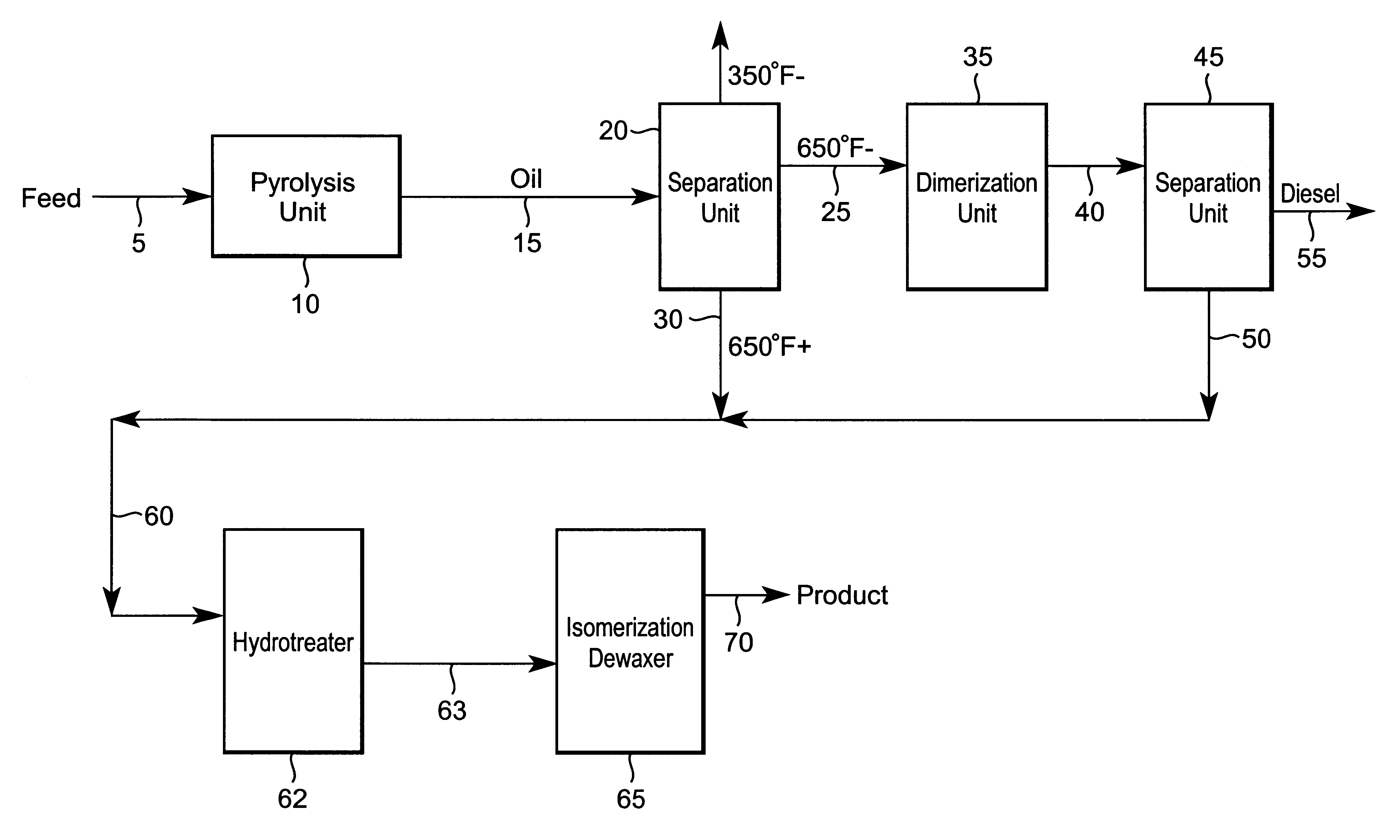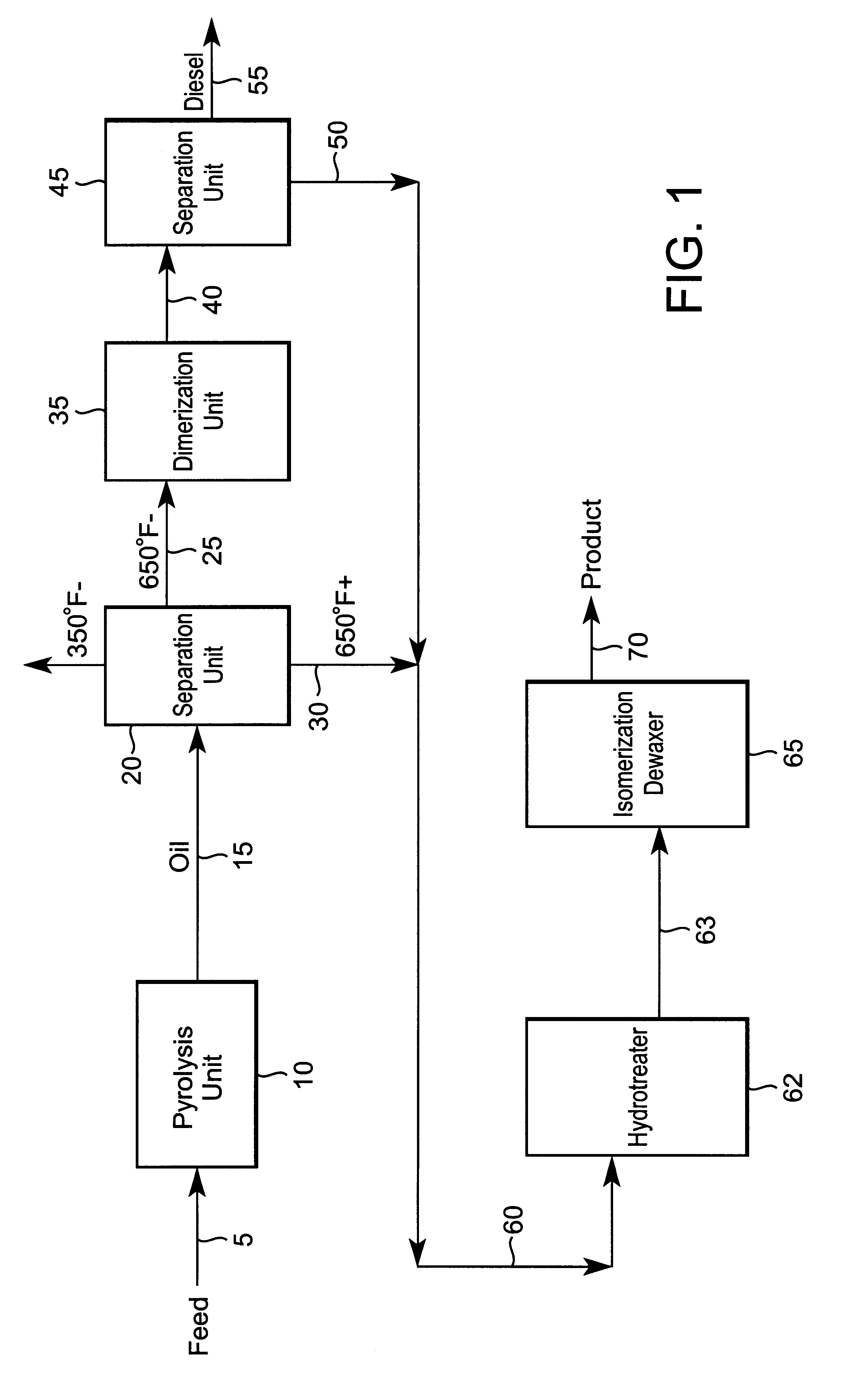Process for making a lubricating composition
a technology of lubricating composition and process, which is applied in the field of making a lubricating composition, can solve the problems of lubricating composition that cannot meet the requirements of viscosity, expensive ways, and high cost of manufacturing a lubricating composition
- Summary
- Abstract
- Description
- Claims
- Application Information
AI Technical Summary
Benefits of technology
Problems solved by technology
Method used
Image
Examples
example 1
High density polyethylene (HDPE) was pyrolyzed in a pyrolysis reactor at atmospheric pressure and different temperatures, as shown in Table IX, which also gives yields of gas, residue, and waxy oil, as well as boiling point distributions of the waxy oil. This table shows that most of the oil in the lube boiling range was in the range of 650-1000.degree. F., with little boiling in the bright stock range above 1000.degree. F.
The waxy oil fraction of the material pyrolyzed at 650.degree. C. was evaluated by high pressure liquid chromatography followed by GC-MS. It was found to be composed almost entirely of n-paraffins and 1-olefins, as shown in Table X.
example 2
HDPE was pyrolyzed in the pyrolysis reactor, as in Example 1, except at sub-atmospheric pressure, as indicated in Table XI and FIG. 2. This shows riot only an increase in the yield of lube range waxy oil (650.degree. F.+), but also a large increase in bright stock range waxy oil (950-1200.degree. F.).
example 3
Waste HDPE, obtained from a recycling center, was pyrolyzed at 650.degree. C. and 0.5 atm pressure. Table XII shows the results are very similar to those obtained with the virgin HDPE of Examples 1 and 2.
PUM
| Property | Measurement | Unit |
|---|---|---|
| kinematic viscosity | aaaaa | aaaaa |
| pressure | aaaaa | aaaaa |
| pressure | aaaaa | aaaaa |
Abstract
Description
Claims
Application Information
 Login to View More
Login to View More - R&D
- Intellectual Property
- Life Sciences
- Materials
- Tech Scout
- Unparalleled Data Quality
- Higher Quality Content
- 60% Fewer Hallucinations
Browse by: Latest US Patents, China's latest patents, Technical Efficacy Thesaurus, Application Domain, Technology Topic, Popular Technical Reports.
© 2025 PatSnap. All rights reserved.Legal|Privacy policy|Modern Slavery Act Transparency Statement|Sitemap|About US| Contact US: help@patsnap.com



